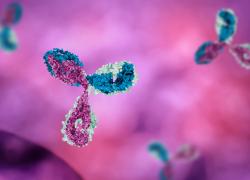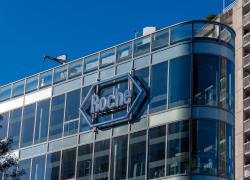
ESMO 2025 – J&J brings a new Rybrevant use into the fold
After promising early data in head and neck, J&J plans a new phase 3, Origami-5.
After promising early data in head and neck, J&J plans a new phase 3, Origami-5.

After Johnson & Johnson’s Rybrevant intrigued at ESMO 2024 in colorectal cancer the company now has its eye on head and neck cancer, following promising results in relapsed disease, presented on Sunday at the ESMO meeting.
Talking to ApexOnco ahead of the conference, J&J’s Mark Wildgust was coy about whether the company would seek FDA accelerated approval in the second-line setting based on the data – but did reveal that the group was planning to start a new phase 3 trial, Origami-5, in first-line head and neck cancer.
That study, slated to begin by the end of 2025, will test Rybrevant plus Keytruda plus carboplatin chemo, versus Keytruda plus 5-FU plus cisplatin or carboplatin in around 500 HPV-unrelated patients, said Wildgust, J&J oncology’s vice-president of global medical affairs.
Origami-4
Meanwhile, the results just presented at ESMO came from the phase 2 Origami-4 trial, specifically from its cohort one, testing subcutaneous Rybrevant monotherapy in HPV-unrelated head-and-neck cancer patients who had previously received chemo and a PD-(L)1 inhibitor.
Prognosis in second-line head and neck is dire: Keytruda monotherapy is approved post-chemo, based on an ORR of just 16% in the Keynote-012 study. In the post-checkpoint inhibitor setting Erbitux produced an ORR of 24% in the Interlink-1 trial.
In Origami-4 Rybrevant led to an ORR of 45%, with 16 partial responses and one complete response among 38 patients. Median duration of response was 7.2 months, and median progression-free survival was 6.8 months. Median overall survival hadn't been reached.
“You’re essentially doubling response rates versus standard of care,” Wildgust said. Adverse events, meanwhile, were said to be consistent with those previously seen with Rybrevant. Treatment-related discontinuations were low, at 2%, and 7% of patients experienced administration-related reactions, all at grade 1 or 2.
On the question of whether J&J would now shoot for accelerated approval based on these results, he replied: “With all good data we talk to the regulatory agencies. We’ll absolutely continue to do that.”
First-line benchmark
As for first-line disease, Keytruda plus chemo has produced an ORR of 36% – setting the bar that Rybrevant will need to beat in Origami-5.
A clue about how Rybrevant might perform here should come next year, from cohort five of Origami-4. This is testing the same regimen, Rybrevant plus Keytruda plus carboplatin, in treatment-naive patients, and is set to yield data in mid-to-late 2026, Wildgust said.
One rival to watch is Merus’s anti-EGFR x LGR5 MAb petosemtamab, which alongside Keytruda has yielded a 63% confirmed response rate among 43 front-line PD-L1-positive head and neck cancer patients, with activity seen in HPV-positive and negative patients alike.
These data, presented at ASCO, were the trigger for a recent $8bn buyout of Merus by Genmab. But when asked about potential competition from petosemtamab, Wildgust said: “We’re very confident about Rybrevant.”
Rybrevant, an EGFR x cMet bispecific, is currently approved for EGFR-mutant NSCLC. However, J&J reckons it could have potential in any EGFR-expressing tumour – a stance backed by early results in colorectal cancer, and now in head and neck.
2322













